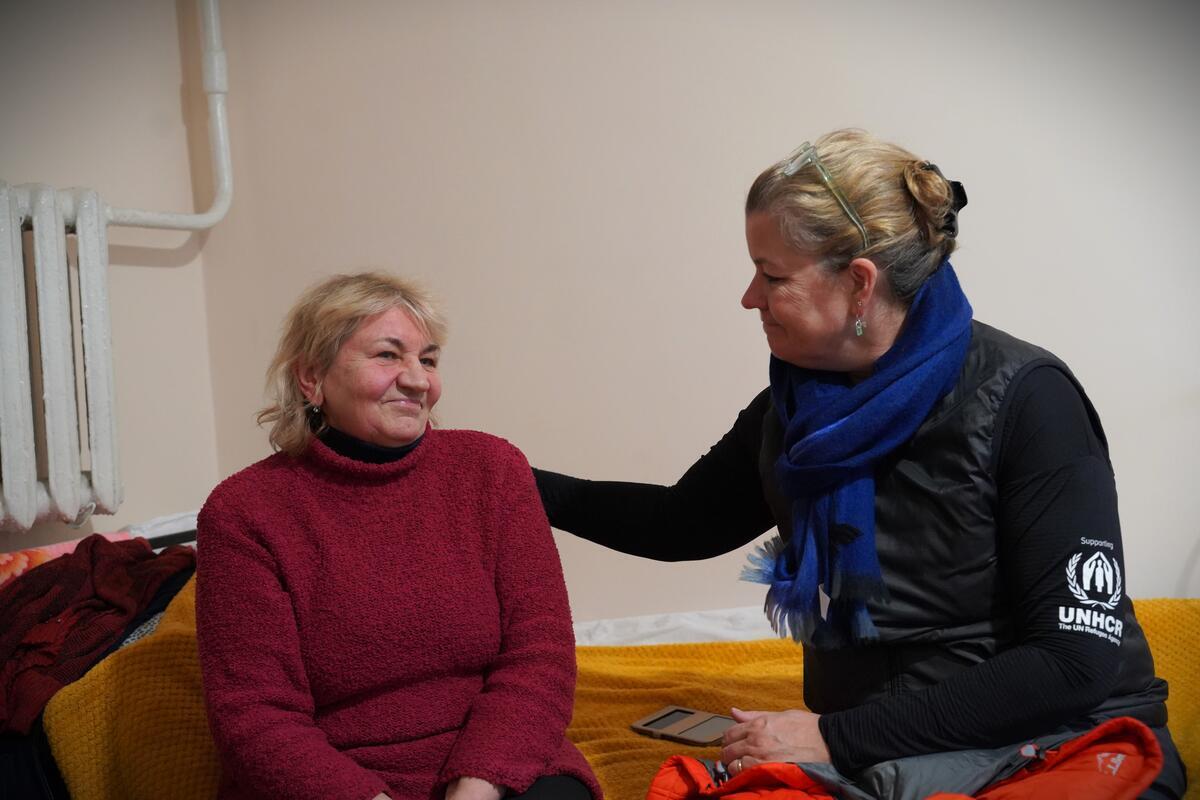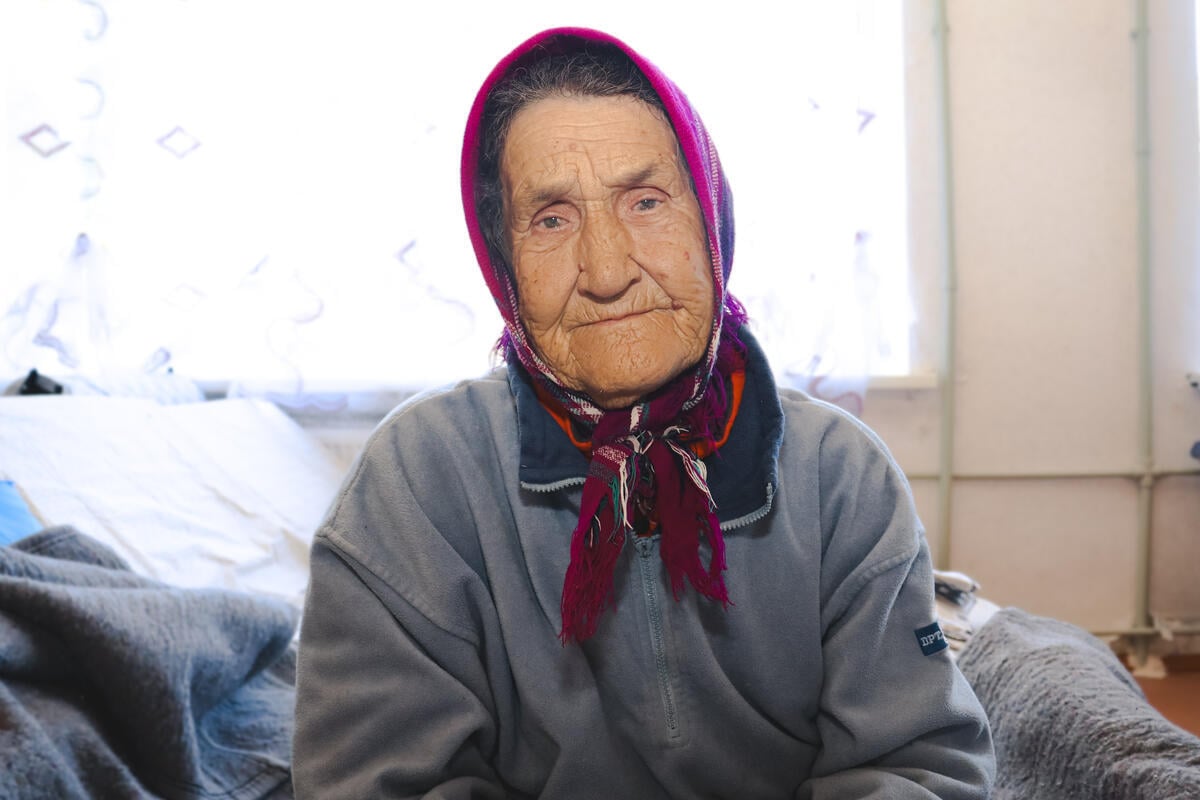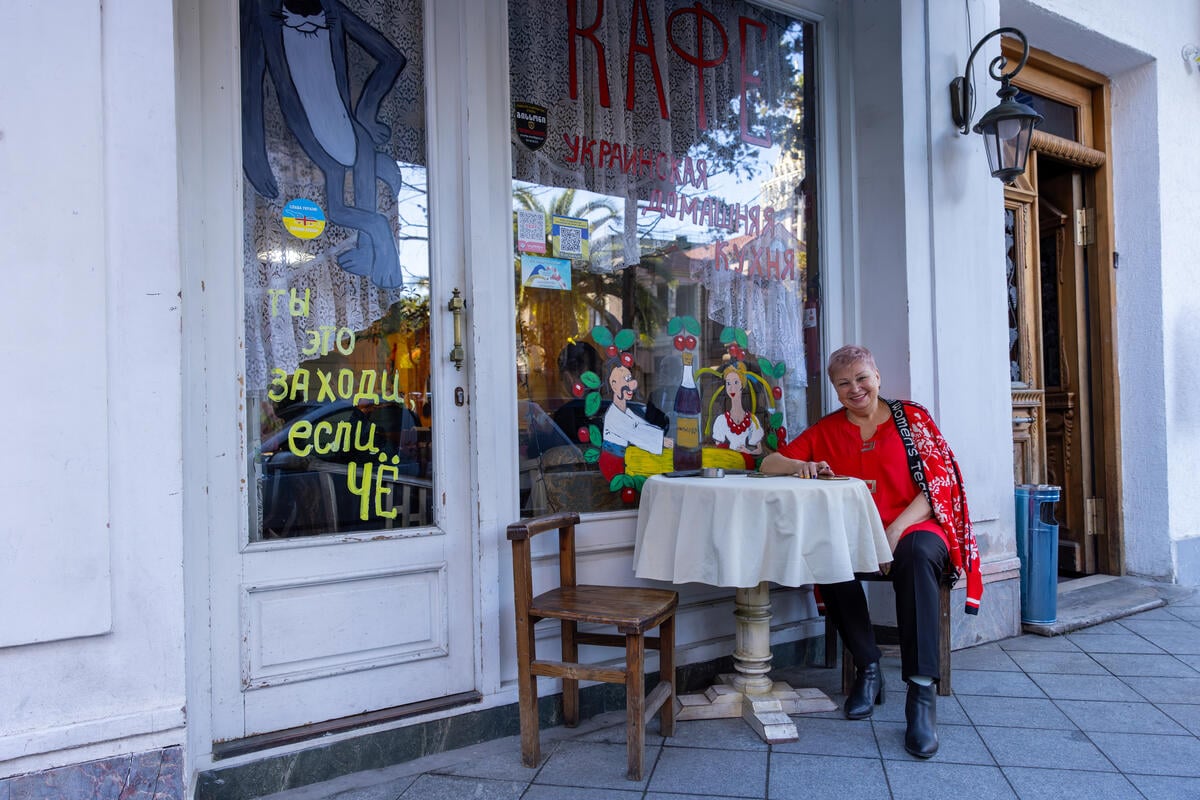Ukraine conflict pushes more people from their homes
Ukraine conflict pushes more people from their homes
Ongoing fighting in eastern Ukraine, in particular around Donetsk, Luhansk and neighbouring towns, is driving more people from their homes and increasing the need for humanitarian aid. The number of people displaced inside Ukraine has more than doubled in the past three weeks. As of 1 September UNHCR estimates that 260,000 people were displaced, compared to 117,000 as of 5 August.
Most of the displaced - 94 per cent - are from eastern Ukraine and are remaining in the Donetsk, Kharkiv and Kyiv regions. UNHCR believes the actual number of people displaced is higher as many are staying with families and friends and choose not to register with the authorities.
Because of insecurity, humanitarian actors have not been able to assess the situation of people displaced in the Luhansk region. UNHCR plans to conduct a fact-finding mission later this week, assuming the situation allows. As 1 September, 2.2 million people remained in conflict areas according to the Ukrainian authorities.
The number of those using the three "corridors" set-up by the Ukrainian authorities to flee conflict areas is decreasing, mainly due to recent incidents when civilians have lost their lives in attacks. Reportedly 6,000 people have left through these corridors since the end of July.
In the Donetsk region since last Tuesday local authorities reported that some 10,000 people left Mariupol to Zaporizhzhia and Berdiansk and other locations, following military activities of the anti-Government forces in Novoazovsk.
Ongoing shelling has left people in conflict areas with limited access to food, water, and other basic necessities. In Donetsk, Makiivka and Gorlovka the regional authorities estimate there are 20,000 people with disabilities and needing help. In Luhansk, residents have been without proper supplies of food and water, and dealing with electricity shortages and communications problems for a month. Buildings and roads are severely damaged, impeding efforts to provide humanitarian aid. In Yasynuvata, some 150 people have reportedly found shelter in basements without electricity. Many of them are elderly. Newly displaced people are arriving with limited resources and are more dependent on aid. Additional assistance will be needed as the upcoming cold season approaches.
After the Ukrainian government re-established control of various towns in the northern part of Donetsk region in early July, many internally displaced people quickly returned. For instance, some 20,000 displaced people returned to Slovyansk from other areas of the Donetsk region. Local authorities in Slovyansk estimate that while some 40 per cent of the population was displaced at the peak of the hostilities, the vast majority (up to 90 per cent) has returned home. Last Saturday (27 August), a UNHCR team saw long lines of cars - many with children - waiting at checkpoints to enter the Slovyansk area from the north. It appears that returns were accelerating in preparation for the school year.
With external displacement, the number of Ukrainians seeking refugee status or asylum in the Russian Federation increased by almost 66,000 during August. According to the Federal Migration Service of the Russian Federation, 121,190 Ukrainians have now applied for refugee status or temporary asylum since January 1st. Since late July, the "quotas for temporary asylum" set for several regions including Moscow, Saint Petersburg, Rostov, and Chechnya have been filled meaning that Ukrainian nationals need to seek asylum in other regions. In addition, 138,825 Ukrainians have applied for other forms of legal stay such as temporary/permanent residence permits and under the programme of "resettlement of compatriots".
A larger number of Ukrainians are arriving in Russia under the visa-free regime. According to the Russian authorities around 814,000 Ukrainians have entered Russia since 1 January 2014. This figure includes people that have applied for refugee/temporary asylum and other residence options.
Most Ukrainians arriving in Russia stay with relatives, friends or find private accommodation either in a host family or rent their own apartments. The Russian authorities have adopted several regulations to facilitate the temporary stay of Ukrainians arriving on its territory.
UNHCR continues to support local government and civic society, as well as deliver assistance directly to the most vulnerable. To date, UNHCR has distributed over 150 metric tons of humanitarian assistance to the Donetsk and Kharkiv regions, hosting over 100,000 displaced persons. UNHCR also has coordinated distribution of food provided by different foundations.
A total of 4,106 Ukrainians requested asylum in the European Union between January and July 2014, compared to 903 applications in the whole 2013. Most Ukrainian applications for asylum were in Poland (1,082), Germany (556) and Sweden (500). In addition, 380 Ukrainians have sought asylum in Belarus in 2014 as of 1 September.
ADDITIONAL QUOTE:
The following quote, attributable to UN High Commissioner for Refugees António Guterres may be used in connection with this briefing note:
QUOTE - "If this crisis is not quickly stopped, it will have not only devastating humanitarian consequences but it also has the potential to destabilize the whole region. After the lessons of the Balkans, it is hard to believe a conflict of these proportions could unfold in the European continent."
For more information on this topic, please contact:
- In Kiev, Nina Sorokopud on mobile +380 50 310 1767
- In Moscow, Galina Negrustueva on mobile +7 903 721 7560
- In Geneva, Adrian Edwards on mobile +41 79 557 9120
- In Geneva, Dan McNorton on mobile +41 79 217 3011








